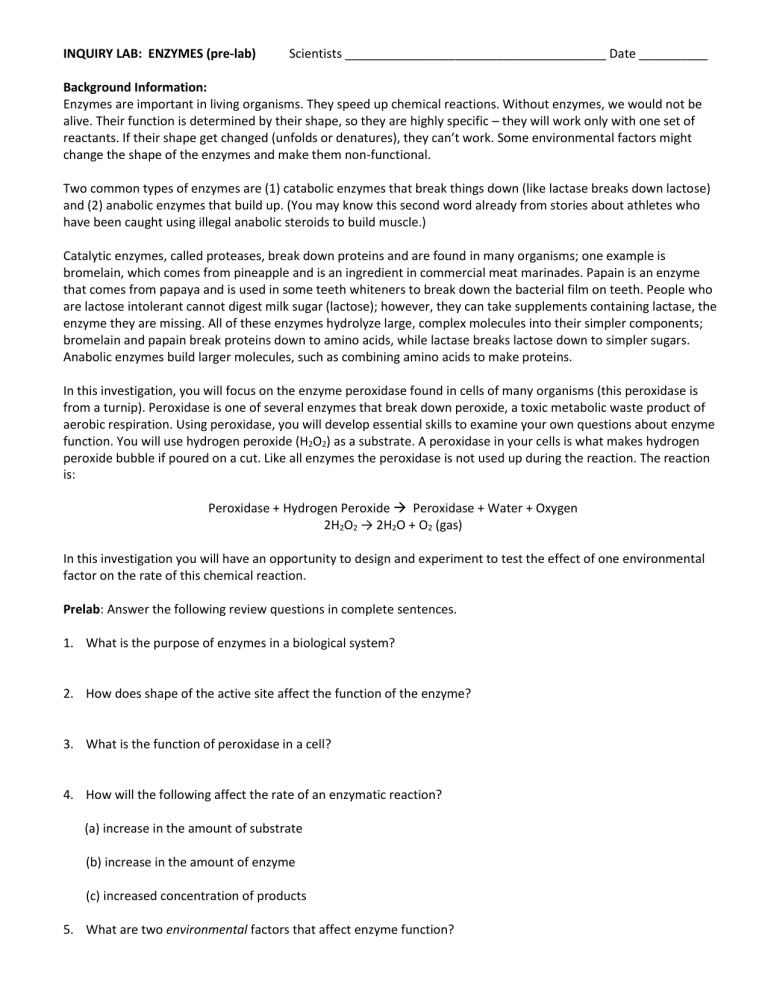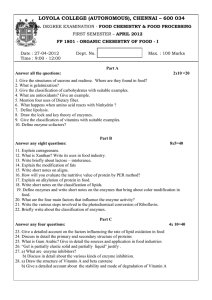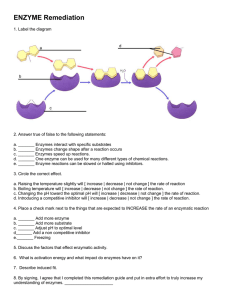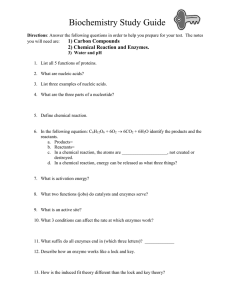INQUIRY LAB: ENZYMES (pre-lab) Background Information: Scientists ______________________________________ Date __________

INQUIRY LAB: ENZYMES (pre-lab)
Background Information:
Scientists ______________________________________ Date __________
Enzymes are important in living organisms. They speed up chemical reactions. Without enzymes, we would not be alive. Their function is determined by their shape, so they are highly specific – they will work only with one set of reactants. If their shape get changed (unfolds or denatures), they can’t work. Some environmental factors might change the shape of the enzymes and make them non-functional.
Two common types of enzymes are (1) catabolic enzymes that break things down (like lactase breaks down lactose) and (2) anabolic enzymes that build up. (You may know this second word already from stories about athletes who have been caught using illegal anabolic steroids to build muscle.)
Catalytic enzymes, called proteases, break down proteins and are found in many organisms; one example is bromelain, which comes from pineapple and is an ingredient in commercial meat marinades. Papain is an enzyme that comes from papaya and is used in some teeth whiteners to break down the bacterial film on teeth. People who are lactose intolerant cannot digest milk sugar (lactose); however, they can take supplements containing lactase, the enzyme they are missing. All of these enzymes hydrolyze large, complex molecules into their simpler components; bromelain and papain break proteins down to amino acids, while lactase breaks lactose down to simpler sugars.
Anabolic enzymes build larger molecules, such as combining amino acids to make proteins.
In this investigation, you will focus on the enzyme peroxidase found in cells of many organisms (this peroxidase is from a turnip). Peroxidase is one of several enzymes that break down peroxide, a toxic metabolic waste product of aerobic respiration. Using peroxidase, you will develop essential skills to examine your own questions about enzyme function. You will use hydrogen peroxide (H
2
O
2
) as a substrate. A peroxidase in your cells is what makes hydrogen peroxide bubble if poured on a cut. Like all enzymes the peroxidase is not used up during the reaction. The reaction is:
Peroxidase + Hydrogen Peroxide Peroxidase + Water + Oxygen
2H
2
O
2
→ 2H
2
O + O
2
(gas)
In this investigation you will have an opportunity to design and experiment to test the effect of one environmental factor on the rate of this chemical reaction.
Prelab: Answer the following review questions in complete sentences.
1.
What is the purpose of enzymes in a biological system?
2.
How does shape of the active site affect the function of the enzyme?
3.
What is the function of peroxidase in a cell?
4.
How will the following affect the rate of an enzymatic reaction?
(a) increase in the amount of substrate
(b) increase in the amount of enzyme
(c) increased concentration of products
5.
What are two environmental factors that affect enzyme function?





